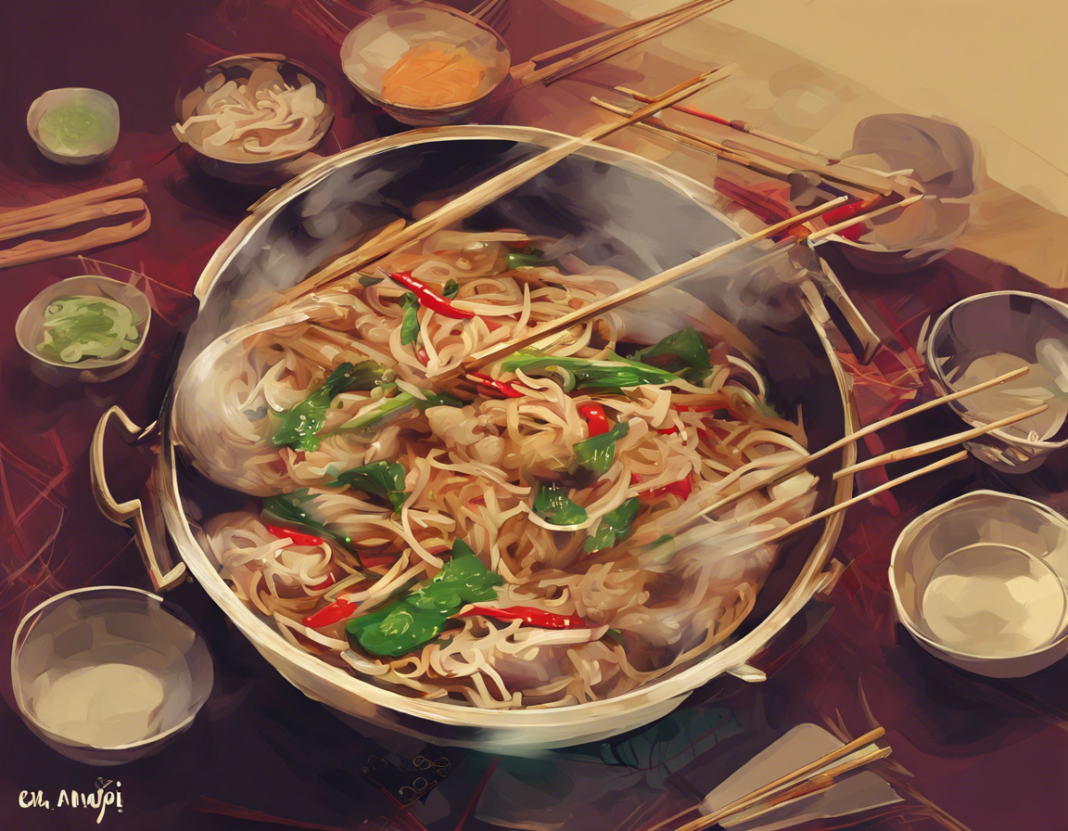In the world of culinary delights, the Chinese wok holds a special place. With a history dating back thousands of years, this iconic cooking vessel has become synonymous with the flavors and aromas of Chinese cuisine. At Sayaji, we celebrate the tradition and artistry of wok cooking, offering our guests an authentic and immersive dining experience that showcases the versatility and deliciousness of this time-honored cooking method.
The Origins of the Chinese Wok
The wok’s origins can be traced back to ancient China, where it was initially used for cooking over an open fire. Its distinctive shape – a wide top that narrows down towards the base – allows for quick and even heating, making it ideal for stir-frying, steaming, deep-frying, and more. Over the centuries, the wok has evolved into a staple in Chinese kitchens and a symbol of culinary expertise.
The Art of Wok Cooking
Wok Hay, often referred to as the “breath of the wok,” is a term used to describe the unique flavor and aroma that food cooked in a wok acquires. Achieving the perfect wok hay requires high heat, skillful tossing and stirring, and a deep understanding of ingredients and timing. At Sayaji, our chefs masterfully harness the power of the wok to create dishes that are bursting with flavor and authenticity.
Wok Cooking Techniques
- Stir-frying: Quick cooking over high heat, with constant tossing and stirring to ensure even distribution of heat and flavor.
- Deep-frying: Immersing ingredients in hot oil for a crispy texture and rich flavor.
- Steaming: Using a wok with a steaming rack to gently cook delicate ingredients with steam.
- Braising: Slow-cooking in a wok with a small amount of liquid to tenderize meats and infuse flavors.
Popular Wok Dishes at Sayaji
- Kung Pao Chicken: A spicy and savory stir-fry dish featuring tender chicken, peanuts, and vegetables.
- Beef with Broccoli: Sliced beef and fresh broccoli florets cooked in a flavorful sauce.
- Vegetable Lo Mein: Stir-fried noodles with an assortment of colorful vegetables and savory sauce.
- Sweet and Sour Pork: Crispy deep-fried pork coated in a tangy sweet and sour sauce.
Tips for Cooking with a Wok
- Preheat your wok: Ensure your wok is smoking hot before adding ingredients to achieve the perfect sear and flavor.
- Use the right oil: Opt for high-heat cooking oils like peanut or vegetable oil for stir-frying and deep-frying.
- Keep it moving: Constantly toss and stir your ingredients to prevent burning and ensure even cooking.
- Don’t overcrowd the wok: Cook in batches if needed to allow ingredients to sear properly.
Embrace the Wok at Sayaji
At Sayaji, we invite our guests to embark on a culinary journey through the flavors of China, led by the venerable wok. From sizzling stir-fries to comforting braised dishes, our menu showcases the versatility and vibrancy of wok cooking. Join us and savor the magic of the Chinese wok, where tradition meets innovation and every dish tells a story.
FAQs:
-
What makes the Chinese wok ideal for cooking?
The unique shape of the wok allows for quick and even heating, making it perfect for a variety of cooking techniques. -
How do you clean and maintain a wok?
To clean a wok, use hot water and a soft sponge; avoid harsh chemicals. After washing, dry the wok thoroughly and season it with oil to prevent rusting. -
Can a wok be used on a regular stovetop?
Yes, a wok can be used on a regular stovetop, but for optimal heat distribution, a gas stove is recommended over electric. -
What is the difference between a wok and a frying pan?
A wok has high, sloping sides that allow for tossing ingredients, while a frying pan has a flat bottom and lower sides, better for shallow frying. -
What dishes are best suited for wok cooking?
Stir-fries, fried rice, noodle dishes, and dishes requiring quick high-heat cooking are best suited for wok cooking.




